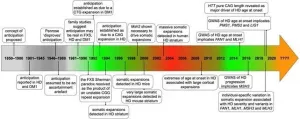(Press-News.org) STEMOs (Stroke-Einsatz-Mobile) have been serving Berlin for ten years. The specialized stroke emergency response vehicles allow physicians to start treating stroke patients before they reach hospital. For the first time, a team of researchers from Charité - Universitätsmedizin Berlin has been able to show that the dispatch of mobile stroke units is linked to improved clinical outcomes. The researchers' findings, which show that patients for whom STEMOs were dispatched were more likely to survive without long-term disability, have been published in JAMA*.
The phrase 'time is brain' emphasizes a fundamental principle from emergency medicine, namely that after stroke, every minute counts. Without treatment, the brain will lose two million brain cells every minute. When dealing with stroke caused by an arterial blockage in the brain, prompt dissolution of the blood clot - known as thrombolysis - is essential.
Ten years ago, a team led by Prof. Dr. Heinrich Audebert (Center for Stroke Research Berlin (CSB) and Charité's Department of Neurology and Experimental Neurology) set itself the aim of further reducing time to treatment by bringing the necessary diagnostic and treatment procedures to the patient rather than the other way around. They did so with great success: Berlin's first purpose-built mobile stroke unit, developed in conjunction with the Berlin Fire Department and MEYTEC GmbH, was launched in February 2011. Following years of research, the team was able to confirm that STEMO-based stroke treatment is safe and, more importantly, reduces time to treatment. Today, the Berlin Fire Department operates three STEMO vehicles. As part of a collaboration between Charité, Vivantes - Netzwerk für Gesundheit GmbH and Unfallkrankenhaus Berlin, these vehicles cover most of the Berlin area. Data from the now-published B_PROUD study show that dispatch of STEMO mobile stroke units is associated with improved outcomes in patients with stroke.
"In our study, dispatch of a mobile stroke unit was linked to increased survival and reduced risk of disability," says Prof. Audebert. He adds: "The relative odds of these patients having significant disabilities three months after stroke was 29 percent lower than in patients cared for by the conventional emergency medical services. STEMO dispatch therefore results in significantly more stroke patients returning to an independent life after stroke." A selection of voices and opinions on the STEMO initiative - from Michael Müller (Governing Mayor of Berlin and Senator for Higher Education and Research), Prof. Dr. Heyo K. Kroemer (Chief Executive Officer of Charité), as well as the initiative's partners and other supporters - can be found here.
Under the leadership of Prof. Audebert and the study's first author, Prof. Dr. Dr. Martin Ebinger (Medical Director of the Medical Park Humboldtmühle Rehabilitation Hospital), the team studied cases of stroke emergencies which occurred in Berlin between February 2017 and May 2019. Whether a STEMO mobile stroke unit was dispatched was effectively decided by chance: if one was available within the relevant area, it was dispatched at the same time as the conventional ambulance, enabling the patient to receive treatment before their arrival in hospital. A STEMO mobile stroke unit was dispatched in 749 of a total of 1,543 cases analyzed as part of the study (49 percent). If no STEMO was available at the time of the emergency call, only a conventional ambulance was dispatched to ensure transport to a specialist hospital. In 794 cases (51 percent), patients were cared for within the conventional emergency medical system. Using a standardized protocol, the researchers then determined survival at three months post-stroke and the extent of any neurological impairment affecting the patients.
Results from their comparison of the STEMO and control groups were unequivocal. Not only did a greater number of STEMO patients receive thrombolysis (60 percent vs 48 percent in the control group), they received this treatment on average 20 minutes earlier than controls. After three months, approximately 7 percent of patients in the STEMO dispatch group had died. This figure compared with 9 percent in the conventional ambulance group. Similarly, while approximately 51 percent of patients in the STEMO group reported no stroke-related impairments in day-to-day functioning, the corresponding figure in the control group was only 42 percent. Patients in the STEMO group also scored significantly better on quality-of-life measures.
INFORMATION:
*Ebinger M et al., Association Between Dispatch of Mobile Stroke Units and Functional Outcomes Among Patients With Acute Ischemic Stroke in Berlin. JAMA 2021;325(5):454-466. doi: 10.1001/jama.2020.26345
STEMO
STEMOs are special purpose emergency response vehicles which have been designed to evaluate and treat patients with stroke. Fitted with a CT scanner and a small laboratory, these mobile stroke units are manned by a neurologist who is supported by a specially trained emergency response team. STEMOs aim to bring the hospital to the patient. Following the introduction of the first mobile stroke unit in the Saarland area of Germany, the launch of the first STEMO in 2011 made Berlin the first metropolitan city to be served by a specially adapted emergency vehicle with CT scanner and miniature laboratory. Organized by and forming an integral part of the Berlin Fire Department, Berlin's STEMOs use teleradiology solutions to share information with the participating hospitals' (neuro)radiology departments. Following the launch of Berlin's first STEMO mobile stroke unit, the initiative was tested for feasibility, safety, and improvements in time to treatment. Based on pilot data, the STEMO service currently being delivered by Charité, Unfallkrankenhaus Berlin and Vivantes Klinikum Neukölln was adopted for further evaluation as a provisional standard care concept. Categorization as 'provisional standard care concept' carries an obligation to study clinical outcomes. The B_PROUD study was designed to meet this obligation. More than 20 similar projects are currently active worldwide, including in New York, Los Angeles, Melbourne and Bangkok. Berlin is the first city in the world to enjoy multiple mobile stroke units providing near comprehensive cover to its citizens. Berlin's three STEMO units are dispatched approximately 6,000 times a year.
Stroke
In Germany, approximately 250,000 people are affected by stroke every year, around 12,000 of them in Berlin. Stroke remains one of the most common causes of death and, left untreated, will cause lasting disability in more than half of all patients affected. Thrombolysis can only be administered to patients with ischemic stroke, i.e. stroke caused by a blockage in an artery that supplies the brain. It is not suitable for patients with hemorrhaging stroke. The use of diagnostic techniques capable of distinguishing between these two types of stroke is therefore essential.
B_PROUD
The B_PROUD (Berlin Pre-hospital Or Usual Delivery of stroke care) study was a prospective, controlled interventional trial with outcome assessed and evaluated by blinded assessors. The random allocation of patients to intervention groups (randomization) was not possible. Allocation to either the intervention or control group was determined by the availability of the STEMO mobile stroke unit. The degree of neurological impairment at three months post-stroke was determined using the modified Rankin Scale. Quality of life was measured using the EQ-5D questionnaire.
With the help of the international Gemini Observatory, a Program of NSF's NOIRLab, and other ground-based telescopes, astronomers have confirmed that a faint object discovered in 2018 and nicknamed "Farfarout" is indeed the most distant object yet found in our Solar System. The object has just received its designation from the International Astronomical Union.
Farfarout was first spotted in January 2018 by the Subaru Telescope, located on Maunakea in Hawai'i. Its discoverers could tell it was very far away, but they weren't sure exactly how far. They needed more observations.
"At that time we did not know the object's orbit as we only had the Subaru discovery observations over 24 hours, but it takes years of ...
A report summary released today by a team at Lehigh University led by Thomas McAndrew , a computational scientist and assistant professor in Lehigh's College of Health, shares the consensus results of experts in the modeling of infectious disease when asked to rank the top 5 most effective interventions to mitigate the spread and impact of COVID-19 in the U.S.
The report is part of an ongoing meta forecasting project aimed at translating forecasting and real world experience into actions.
McAndrew and his colleagues wanted to answer "Here is where ...
Wilmington, DE, Feb. 11, 2020 -Scientists have developed an affordable, downloadable app that scans for potential unintended mistakes when CRISPR is used to repair mutations that cause disease. The app reveals potentially risky DNA alterations that could impede efforts to safely use CRISPR to correct mutations in conditions like sickle cell disease and cystic fibrosis. The development of the new tool, called DECODR (which stands for Deconvolution of Complex DNA Repair), was reported today in The CRISPR Journal by researchers from ChristianaCare's Gene Editing Institute.
"Our research has shown that when CRISPR is used to repair a gene, it also can introduce a variety of subtle changes to DNA near the site of the repair," said Eric ...
Amsterdam, February 11, 2021 - Recent genetic data from patients with Huntington's disease (HD) show that DNA repair is an important factor that determines how early or late the disease occurs in individuals who carry the expanded CAG repeat in the HTT gene that causes HD. The processes of DNA repair further expand the CAG repeats in HTT in the brain implicated in pathogenesis and disease progression. This special issue of the Journal of Huntington's Disease (JHD) is a compendium of new reviews on topics ranging from the discovery of somatic CAG repeat expansion in HD, to our current understanding of the molecular mechanisms involved ...
In the last 25 years, scientists have discovered over 4000 planets beyond the borders of our solar system. From relatively small rock and water worlds to blisteringly hot gas giants, the planets display a remarkable variety. This variety is not unexpected. The sophisticated computer models, with which scientists study the formation of planets, also spawn very different planets. What the models have more difficulty to explain is the observed mass distribution of the planets discovered around other stars. The majority have fallen into the intermediate mass category - planets with masses of several Earth masses to around that of Neptune. Even in ...
LAWRENCE -- Nearly every fall, as football teams return to the field, tragic stories of players falling ill and even dying of heat trauma make the headlines. What many don't consider is that marching band members -- who don heavy uniforms and perform in the same sweltering temperatures -- may also be at risk.
A study led by the University of Kansas has measured core temperatures, hydration and sweat levels of marching band members and found that they are very much at risk and deserve access to athletic trainers for their safety -- just as players do.
The study used high tech methods to gauge band members' body core ...
A study led by researchers at Baylor College of Medicine reveals a novel role of the steroid receptor coactivator 3 (SRC-3/NCOA3), a protein crucial for steroid hormone function and a prognostic marker for aggressive human breast and other cancers.
The team discovered that SRC-3 also regulates human immune T regulatory cells (Tregs), which contribute to the regulation of the body's immunological activity by suppressing the function of other immune cells, including those involved in fighting cancer. The study, which appears in the journal Scientific Reports, shows that Tregs whose SRC-3 function was eliminated failed to suppress the activity of other immune cells in the lab. The authors anticipate that their findings ...
The golden-mantled ground squirrel (Callospermophilus lateralis) is a popular sight among tourists in the Rocky Mountains--the small rodent is a photogenic creature with a striped back and pudgy cheeks that store seeds and other food.
But there's a reality that Instagram photos don't capture, said Christy McCain, an ecologist at the University of Colorado Boulder. In a new study spanning nearly 13 years, she and her colleagues discovered that the ground squirrel has joined many other small mammals in Colorado's Rocky Mountains that are making an ominous trek: They're climbing uphill to avoid warming temperatures in the state brought on by climate change.
"It's frightening," ...
Globular clusters are extremely dense stellar systems, in which stars are packed closely together. They are also typically very old -- the globular cluster that is the focus of this study, NGC 6397, is almost as old as the Universe itself. It resides 7800 light-years away, making it one of the closest globular clusters to Earth. Because of its very dense nucleus, it is known as a core-collapsed cluster.
When Eduardo Vitral and Gary A. Mamon of the Institut d'Astrophysique de Paris set out to study the core of NGC 6397, they expected to find evidence for an "intermediate-mass" black hole (IMBH). These are smaller than the supermassive black holes that lie at the cores of large galaxies, but larger than stellar-mass black holes ...
Rheumatic heart disease (RHD) develops as a long term complication of childhood streptococcal angina. Latent RHD can be detected with echocardiography years before it becomes symptomatic. RHD is curable when treated early with medication.
RHD is responsible for over 300 000 deaths worldwide each year, accounting for just over two-thirds of all deaths from valvular heart diseases. RHD is disproportionally prevalent across sub-Saharan Africa, South Asia and the Pacific Islands and largely a phenomenon of marginalized communities in developing and emerging countries whereas ...






